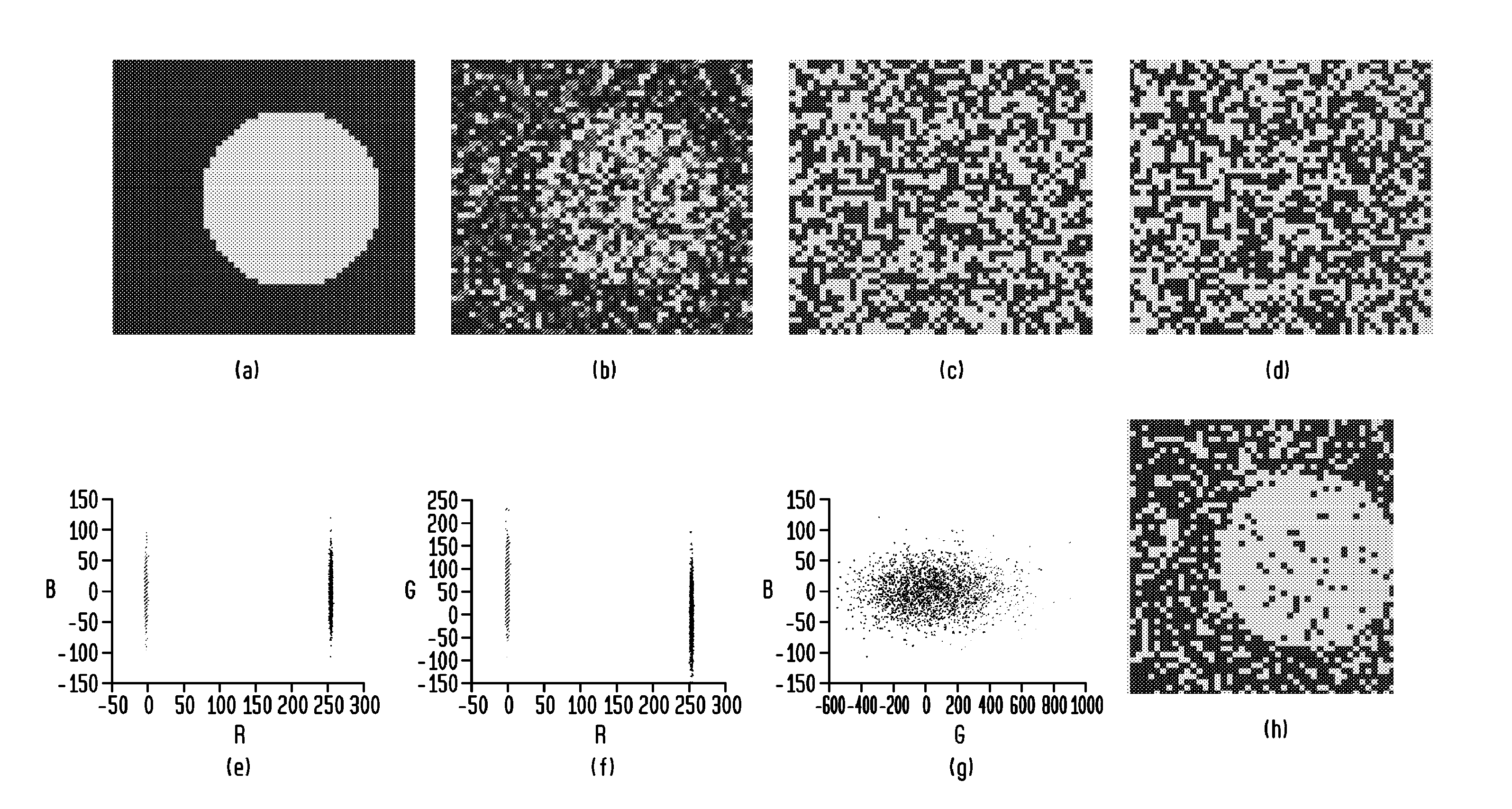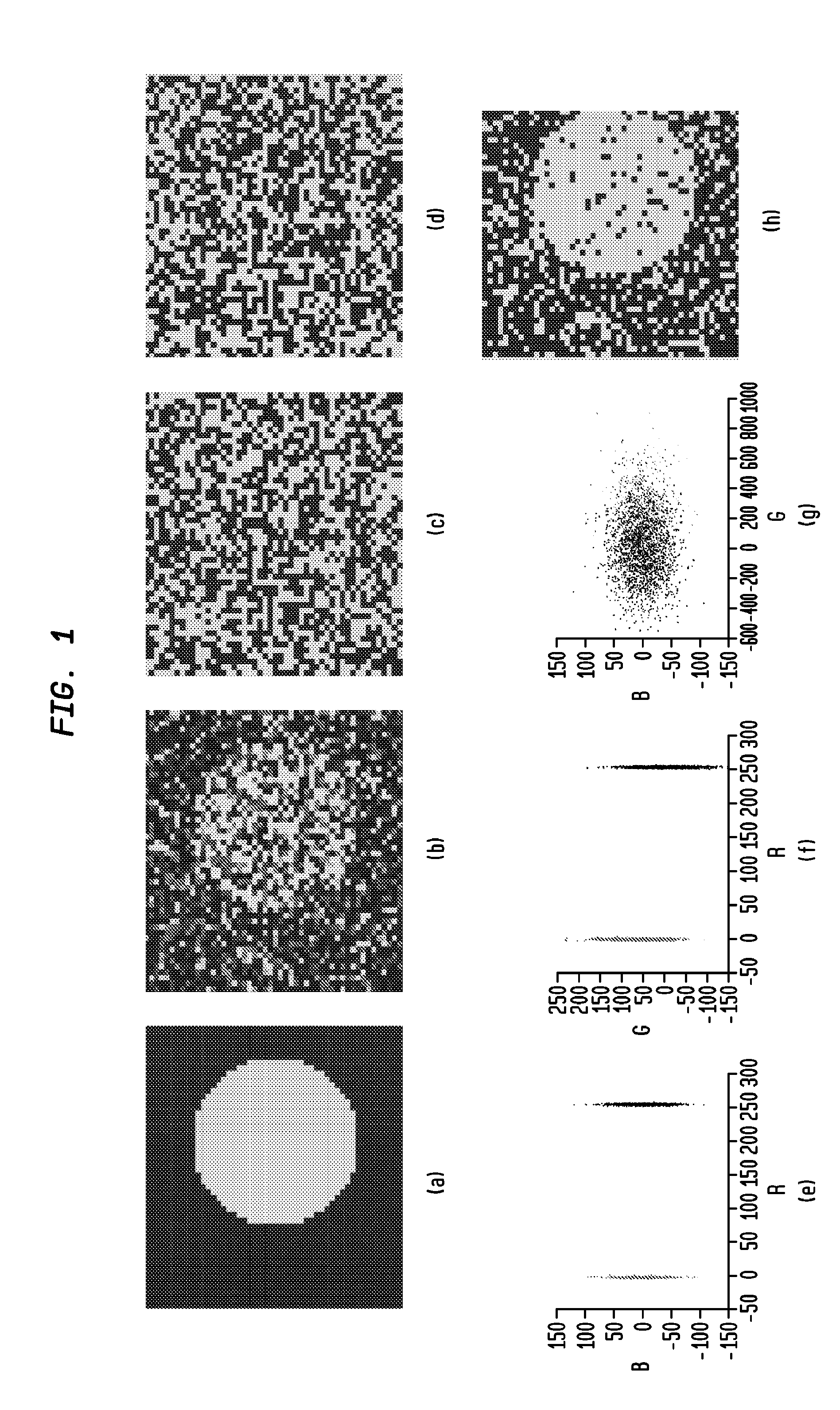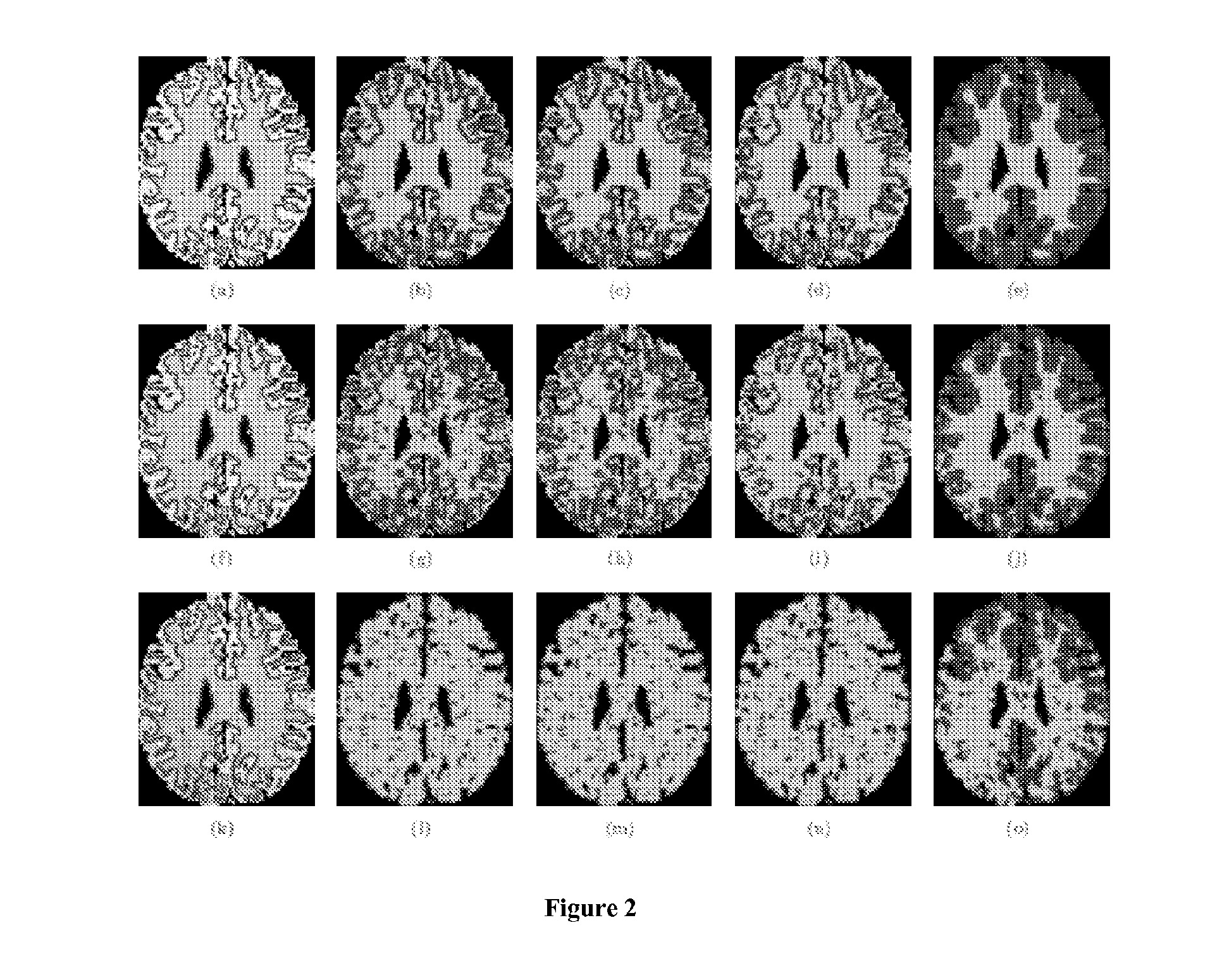Enhanced multi-protocol analysis via intelligent supervised embedding (empravise) for multimodal data fusion
a multi-protocol analysis and embedding technology, applied in image analysis, instruments, computing, etc., can solve the problems of disproportionately large number of variables (features), noise in the original n-d space tends to adversely affect class discrimination, and dr methods are known to suffer from certain shortcomings
- Summary
- Abstract
- Description
- Claims
- Application Information
AI Technical Summary
Benefits of technology
Problems solved by technology
Method used
Image
Examples
example 2
Comparison of ML Estimators
[0662]White matter (WM) pixel-level detection accuracy results for ensemble embedding using two different ML estimators (median and mean) were averaged over all 10 MNI brain images considered and summarized in Table 4, for each of the 18 combinations of noise and inhomogeneity (total of 180 experiments). The accuracy values were generally consistent across all the experiments conducted. No statistically significant difference in classifier performance was observed when using Ψ({tilde over (X)}GEMed) and Ψ({tilde over (X)}GEMean). It would appear that Ψ({tilde over (X)}GEMean) is less susceptible to higher noise and bias field levels compared to Ψ({tilde over (X)}GEMean) (trends in FIG. 3).
TABLE 4Comparing the mean and median as ML estimators withinCalcConsEmbed.NoiseInhomogeneityφACC ({tilde over (X)}GEMED)φACC ({tilde over (X)}GEMean)0% 0%66.86 ± 2.8966.89 ± 2.9120%61.65 ± 4.5865.34 ± 4.1240%64.28 ± 5.9363.39 ± 6.511% 0%80.62 ± 1.0380.45 ± 1.0720%73.07 ± ...
example 1
Prostate Cancer Detection Using Multi-Parametric MRI
[0668]This Example provides application of EMPrAvISE to the detection of prostate cancer on 3 Tesla in vivo multi-parametric (T2w, DCE, DWI) MRI. The low-dimensional data representation via EMPrAvISE is found to be superior for classification as compared to (1) the individual protocols, and (2) concatenation of multi-parametric features. The present invention also utilizes a probabilistic pairwise Markov Random Field algorithm to complement the result of EMPrAvISE (AUC=0.77) via the incorporation of spatial constraints.
[0669]1. Data Acquisition
[0670]A total of 12 pre-operative in vivo patient studies were obtained using a 3 Tesla Genesis Signa MRI machine at the Beth Israel Deaconess Medical Center. Each of the patients was diagnosed with CaP via examination of needle core biopsies, and scheduled for a radical prostatectomy. Prior to surgery, MR imaging was performed using an endo-rectal coil in the axial plane and included T2w, DC...
example 3
Comparison of EMPrAvISE Against Individual Feature Based Classifiers
[0701]This Example provides a comparison of
feature-based classifiers.
[0702]First, hEm (via EM PrAvISE) is compared against classifiers constructed using the different uni-modal feature sets corresponding to T2w, DCE, and DWI MRI data (hT2, hT1, hADC). FIG. 10 shows average ROC curves across 39 leave-one-out cross-validation runs, for the different classifier strategies in Table 3. Table 4 summarizes average and standard deviation of AUC and accuracy values for different classifiers averaged over the 39 leave-one-out cross-validation runs, for the different classifier strategies in Table 3. As can be gleaned from Table 4, hEm yields a higher classification accuracy and AUC compared to hT2, hT1, or hADC.
TABLE 4Summary of average and standard deviation of AUC and accuracyvalues for different classifiers averaged over the 39 leave-one-out cross-validation runs, for the different classifier strategies in Table 3.Classifi...
PUM
 Login to View More
Login to View More Abstract
Description
Claims
Application Information
 Login to View More
Login to View More - R&D
- Intellectual Property
- Life Sciences
- Materials
- Tech Scout
- Unparalleled Data Quality
- Higher Quality Content
- 60% Fewer Hallucinations
Browse by: Latest US Patents, China's latest patents, Technical Efficacy Thesaurus, Application Domain, Technology Topic, Popular Technical Reports.
© 2025 PatSnap. All rights reserved.Legal|Privacy policy|Modern Slavery Act Transparency Statement|Sitemap|About US| Contact US: help@patsnap.com



